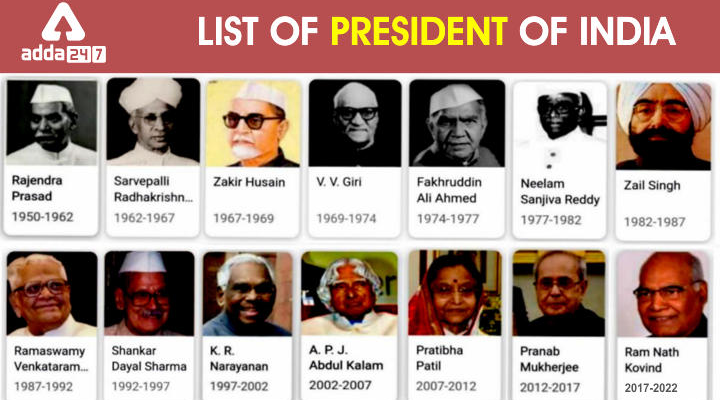President of India
President of India (Droupadi Murmu): On 21st July there is a round of elections between the President Election candidates, Yashwant Sinha and Droupadi Murmu. Droupadi Murmu has been elected as the 15th President of India. She was serving as the Governor of Jharkhand from 2015 to 2021. The tenure of incumbent President Ram Nath Kovind is ending on July 24 and his successor, Droupadi Murmu took oath on July 25, 2022. Prime Minister of India ( Narendra Modi ) gave best wishes for the future to Murmu.
15th President of India
The Hon’ble President of India is the head of the Country. The President of India is also the Commander-in-Chief of the Indian Armed Forces. Ram Nath Kovind is the current President of India till 24th July 2022. He was elected as the president on 25th July 2017. The president of India like every other Indian is bound by the constitution of India to act on the advice of the prime minister and cabinet as long as the advice is not violating the constitution.
Indian President
Presidents of India: India got its long-awaited independence from British rule in the year 1947, after over 150 years of cruel British rule, India finally managed to break free of the clutches. Dr. Rajendra Prasad was elected as the first President of India. The President of India is also known as the first citizen of India. Dr. Rajendra Prasad was unanimously elected as the first President of the Republic of India on January 24, 1950, by the Constituent Assembly. The President holds office for a tenure of five years. The President of India can resign from office at any time by addressing the resignation letter to the Vice-President. You will also get to know how the election of President is conducted and the Powers and Frequently asked questions related to it.
First President of India
Rajendra Prasad (1884-1963) was an Indian nationalist and the first president of India. He was an important leader of the Indian National Congress and a close coworker of Gandhi. He was born in Saran District, Bihar State, eastern India, on Dec. 3, 1884, into the Kayastha, or scribe, caste. A devout Hindu, he received his early education in Bihar and then attended Presidency College, Calcutta. The Swadeshi movement and particularly the Dawn Society influenced him to become a nationalist. He continued his education, earned advanced degrees in law, and practiced law in Calcutta and then in Patna.
Dr. Rajendra Prasad
Dr. Rajendra Prasad gave up his law practice in 1920 to join the noncooperation movement. During the internal split in the Congress during the 1920s, he was a spokesman for the No-Changer group, which whole-heartedly supported Gandhi’s constructive program, particularly the production of indigenous cloth (or khaki) by hand spinning. In the 1930s Prasad, along with Vallabhbhai Patel and others, led the Gandhian Old Guard, which usually dominated the Congress organization. They opposed the Congress Socialists. Rajendra Prasad was Congress president in 1934 and at Mahatma Gandhi’s request again served as president after the serious internal struggle of 1939. After serving as minister for food and agriculture in the interim government, he became president of the Constituent Assembly.
He was chosen interim president of his country and was elected the first president of the Republic of India. During his presidency, he toured India and many countries in Asia. In his speeches, he stressed national and communal unity, the need for a national language, the scarcity of food and the ways to increase food production, and the achievements of Indian culture. The difficulties of the post-independence years were eased by the close cooperation between President Prasad and Prime Minister Jawaharlal Nehru. Dr. Rajendra Prasad died on Feb. 28, 1963, in Patna.
List of Presidents of India

- Dr. Rajendra Prasad (Jan 26, 1950 – May 13, 1962)
He was the first President of Independent India, he worked as president for two consecutive terms. He also served as the President of the Constituent Assembly and the Chief Leader of the Indian Independence Movement. He was awarded the Bharat Ratan (the highest civilian award) in the year 1962.

2. Dr. Sarvepalli Radhakrishnan (May 13, 1962 – May 13, 1967)
Dr. S. Radhakrishnan was an Indian philosopher and was also a teacher in India and at Oxford University. His birthday is celebrated as National Teacher’s Day. He was awarded Bharat Ratna in the year 1954.

3. Dr. Zakir Hussain (May 13, 1967 – May 03, 1969)
He was a renowned Indian economist and also a politician and served as the 3rd President of India. Before serving as President he was the Governor of Bihar from 1957 to 1962 and Vice President of India from 1962 to 1967. He was awarded Padma Vibhushan in 1954 and Bharat Ratna in 1963 for his service.
4. V.V. Giri (Acting) (May 03, 1969 – July 20,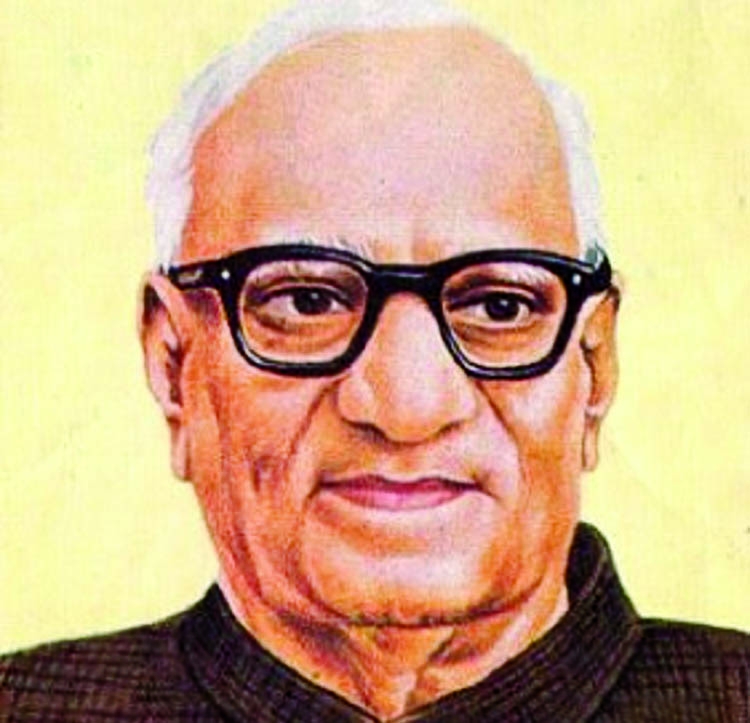 1969); Full Term (August 24, 1969 – August 24, 1974)
1969); Full Term (August 24, 1969 – August 24, 1974)
Following the demise of Dr. Zakir Hussain, Varahagiri Venkatagiri commonly known as V.V.Giri became the acting President. He was the only person to be elected as an independent candidate for the post of President. He resigned after 2 months since he wanted to become an elected President. He later served his full term from 1969 to 1974.
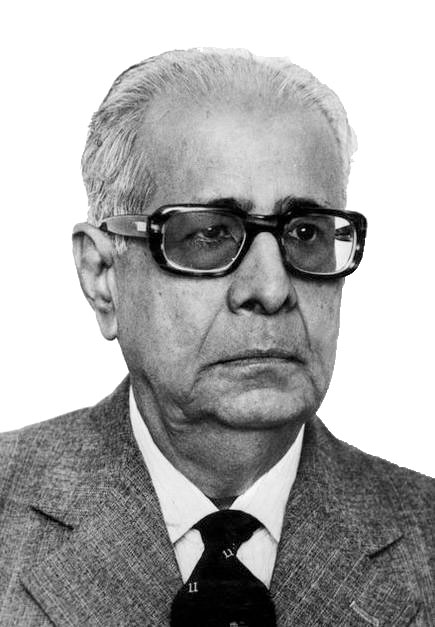
5. Justice Mohammad Hidayatullah (July 20, 1969 – August 24, 1969) (Acting)
He was the 11th Chief Justice of India serving from 25 February 1968 to 16 December 1970, and the sixth Vice President of India, serving from 31 August 1979 to 30 August 1984. He also served as the Acting President of India from 20 July 1969 to 24 August 1969 following the resignation of V.V. Giri.

6. Fakhruddin Ali Ahmed (August 24, 1974 – February 11, 1977)
He served as the President of India during the time of the Emergency. He was the second Muslim to be elected as the President of India and also the second to die in state. In his honor, a medical college Fakhruddin Ali Ahmed Medical College has been named at Barpeta, Assam.

7. B.D. Jatti (Acting) (February 11, 1977 – July 25, 1977)
After the death of Fakhruddin Ali Ahmed, Basappa Danappa Jatti became the acting President of India from 11 February to 25 July 1977. He also served as Vice President of India from 1974–1979.

8. Neelam Sanjiva Reddy (July 25, 1977 – July 25, 1982)
He was the first Chief Minister of Andhra Pradesh. He was also the first to be elected unopposed and the youngest to occupy Rashtrapati Bhavan. He took a 70 percent cut in his salary as a gesture toward the poor economic conditions in 1977.

9. Giani Zail Singh (1982 – 1987)
The only Sikh President of India till now, Singh also served as the Chief Minister of Punjab. He came under scrutiny during Operation Blue Star, when then prime minister Indira Gandhi ordered the security forces to combat Jarnail Singh Bhindranwale and his armed followers in the Golden Temple, Amritsar.
 10. R. Venkataraman July 25, 1987 – July 25, 1992
10. R. Venkataraman July 25, 1987 – July 25, 1992
As a President of India, Venkataraman had the distinction of working with four Prime Ministers. Before being elected as the President, he served a stint as the Governor of the International Monetary Fund, the International Bank for Reconstruction and Development, and the Asian Development Bank.
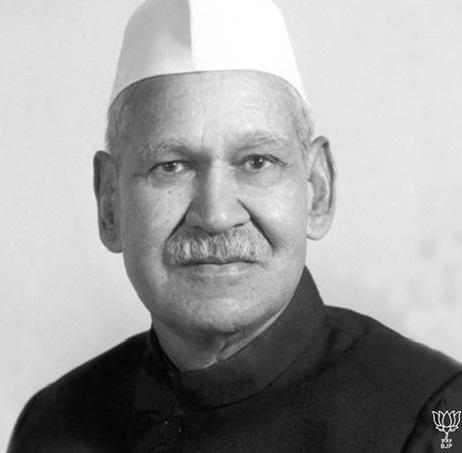
11. Dr. Shankar Dayal Sharma July (25, 1992 – July 25, 1997)
He earlier served as the eighth Vice-President of India and the Chief Minister of Bhopal state. As a member of Congress, he accompanied the movement against the Nawab of Bengal, who expressed a desire to retain the princely state.
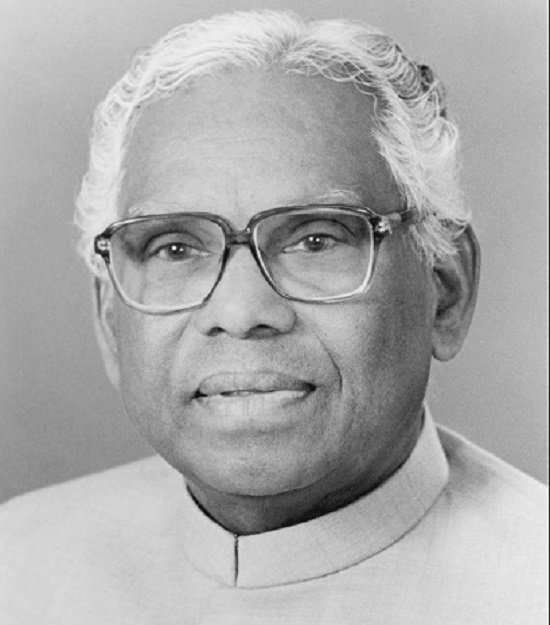
12. K.R. Narayanan (July 25, 1997 – July 25, 2002)
He was the first Dalit-origin President of India. Narayanan, who formerly served as a diplomat, served as India’s ambassador to China and the United States. He dissolved the Lok Sabha twice, firstly he refused to dismiss the Kalyan Singh Government in UP in 1997 and 1998 and the Rabri Devi government in Bihar.
:quality(60)/authors/apj_abdul_kalam_1469959980.jpg)
13. Dr. A.P.J. Abdul Kalam (July 25, 2002 – July 25, 2007)
Popularly known as the ‘Missile Man of India’ Dr. A.P.J. Abdul Kalam was the first scientist to become President in 2002. Kalam was affectionately known as the People’s President and also received the Bharat Ratna in 1997. In his directorial, Rohini-1 satellites, Agni and Prithvi’s missiles were successfully launched.
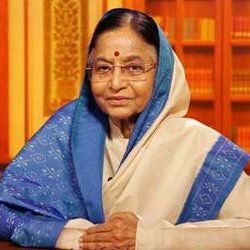
14. Pratibha Patil (July 25, 2007 – July 25, 2012)
She was the first woman to become the President of India. During her tenure, she commuted the death sentence in 19 cases and rejected petitions for three. From 1962 to 1985 she was a member of the Maharashtra Legislative Assembly five times and was elected from Amravati to the Lok Sabha in 1991.
15. Pranab Mukherjee (July 25, 2012 – July 25, 2017)
Mukherjee is the only President who served all the major portfolios at the Centre – Foreign, Defenc e, Commerce, and Finance – at different times in his political career. In 1984, Mukherjee was voted the Best Finance Minister in the World by Euromoney magazine. He was awarded the best Parliamentary Award in 1997 and Padma Vibhushan, India’s second-highest civilian honor in 2008.
e, Commerce, and Finance – at different times in his political career. In 1984, Mukherjee was voted the Best Finance Minister in the World by Euromoney magazine. He was awarded the best Parliamentary Award in 1997 and Padma Vibhushan, India’s second-highest civilian honor in 2008.
16. Ram Nath Kovind (July 25, 2017 – 25th July 2022)

He is only the second Dalit leader after RK Narayanan since Independence to occupy India’s highest ceremonial post. He is the former Governor of Bihar. His approach to political problems earned him praise across the political spectrum. As a Governor his achievements were the creation of a judicial commission to investigate corruption in universities.
17. Droupadi Murmu ( Elected as the 15th President, Oath on 25th July 2022) 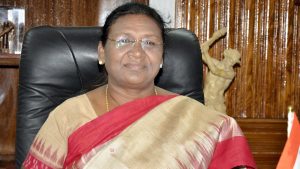
She has been elected as the 15th President of India by surpassing Yashwant Sinha in the Parliament House on 21st July 2022. She scripted history by becoming India’s First Tribal Woman President. She started her carrier by Electing as the Councilor and becomes Vice-Chairperson, of Rairangpur Nagar Panchayat. She was the governor of Jharkhand from 2015-2021.
List of All Prime Ministers of India; Check Complete List
Eligibility Criteria of President of India
Article 58 of the Indian Constitution says that the candidate for President of India must:
- President must be a citizen of India.
- The president must have completed the age of thirty-five years.
- The presidential candidate should be qualified for elections as a member of the Lok Sabha.
- The president must not hold any office of profit under the Union or any State government, or any local or other authority.
Election of President of India
The election for the President of India is held by the system of proportional representation using the single transferable vote and the voting is by Secret Ballot. The nomination of a candidate for election to the office of President must be subscribed by at least 50 electors as proposers and 50 electors as seconders.
The President of India is elected not directly by the people but by members of the electoral college consisting of:
- The elected members of both Houses of Parliament;
- The elected members of the legislative assemblies of the states; and
- The elected members of the legislative assemblies of the Union Territories of Delhi and Puducherry.
- Every candidate has to make a security deposit of Rs 15,000 in the Reserve Bank of India.
- The Supreme court inquires about all the disputes regarding the President’s Election.
- Takes both in presence of the Chief Justice of India or in his absence, the senior-most Judge of the Supreme Court
President of India Term of Office
Article 56 of the Indian Constitution says that:
- The President of India shall hold office for a term of 5 years.
- There is no upper limit on the number of times a person can become President of India
- The President of India can give their resignation to Vice-President before the full term.
- The President of India is elected for five years but he/she is eligible for immediate re-election and can serve any number of terms.
President Salary and Residence
The salary and allowances of the President of India are fixed by the Parliament of India. The current salary of the President is Rs 1,50,000 per month. The official residence of the President is Rashtrapati Bhavan, New Delhi.
Impeachment of President
Impeachment is the process to remove the President of India from office before the term expires. The Impeachment can be carried out if the president violates the Constitution of India and the proceedings can be initiated in either of the two houses of the Parliament. A two-thirds majority is required to pass the resolution in the House. After this, a notice is signed by a quarter of the members of the House that contains the charges and is sent to the President. After 14 days charges are taken into consideration by the other House and during this time the President can defend himself. If the charges are approved by the second House also then the President is said to have been impeached and will have to leave office.
Powers of President
- President appoints PM, Ministers, Chief Justice & judge of Supreme Court & High Court, Chairman & members of UPSC, Comptroller and Auditor General, Attorney General, Chief Election Commissioner and other members of Election Commission of India, Governors, Members of Finance Commission, Ambassadors, etc.
- President holds the power to summon & prorogue the sessions of the 2 houses & can even dissolve Lok Sabha.
- President appoints the finance commission (after every 5 years) that recommends the distribution of taxes between Union & State governments.
The President can promulgate 3 types of Emergencies:-
- National Emergency (Article 352)
- State Emergency (President’s Rule) (Article 356)
- Financial Emergency (Article 360)
- President appoints Chief of Army, Navy, and Air force.
- Declares wars & concludes peace subject to the approval of the Parliament
- No money bill or demand for grants can be introduced or moved in Parliament unless it has been recommended by the President.
- President has the power to grant pardon, reprieve or remit punishment, or commute death sentences.
Important Facts
- Till now, seven Presidents of India have been members of a political party before being elected as President.
- Six of them were active members of the Indian National Congress.
- The current President of India, Ram Nath Kovind was previously the Governor of Bihar.
- The First President of India, Dr. Rajendra Prasad is the only person to have held office for two terms.
- The current President of India, Ram Nath Kovind was the Governor of Bihar before he became the President of India.
- Prathiba Devisingh Patil was the first female President of India.
Also, Check – the President of India List 2022
We hope this information on presidents of India was helpful for you and for more study notes like this stay connected with sscadda.com. And to read this article in Hindi click on the link given below.
Source link

